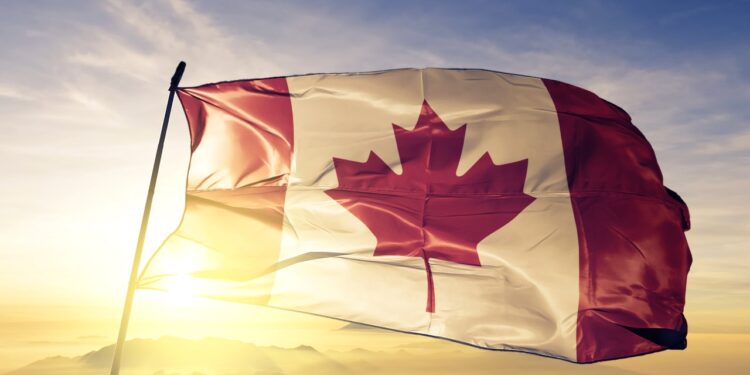The Maple Leaf Flag, Canada’s iconic national symbol, was officially adopted on February 15, 1965, following a royal proclamation by Queen Elizabeth II. This historic moment marked the end of a long and often heated debate known as the Great Flag Debate, which had divided Canadians over the question of national identity and heritage.
Prior to the adoption of the Maple Leaf Flag, Canada had used the Canadian Red Ensign, which featured the Union Jack and the Canadian coat of arms on a red background. However, Prime Minister Lester B. Pearson believed that Canada needed a distinctive flag that would better represent its growing independence and unique identity as a sovereign nation.
The design process involved extensive consultation and consideration of thousands of proposals submitted by Canadians. The winning design, created by George Stanley and refined by Jacques Saint-Cyr, featured a stylized red maple leaf on a white square background, flanked by red bars on either side. The proportions were carefully calculated, and the 11-point maple leaf was chosen for its clear visibility at a distance.
The flag’s colors, red and white, had been officially designated as Canada’s national colors by King George V in 1921. The maple leaf itself had long been a symbol of Canada, appearing on military badges, coats of arms, and various national symbols since the 18th century.
The final design was approved by Parliament on December 15, 1964, after a heated 33-day debate. Just two months later, at noon on February 15, 1965, the new flag was raised for the first time on Parliament Hill in Ottawa. Thousands of Canadians gathered to witness this historic moment, as the Red Ensign was lowered and the Maple Leaf Flag took its place.
The ceremony was marked by both celebration and solemnity. The Governor General, Georges Vanier, described the new flag as a symbol of “the unity of the nation.” While some veterans and traditionalists mourned the retirement of the Red Ensign, most Canadians embraced their new national symbol with pride.
In the years since its adoption, the Maple Leaf Flag has become one of the world’s most recognizable national flags and a powerful symbol of Canadian values, identity, and unity. Its simple yet distinctive design has come to represent Canada’s natural beauty, cultural diversity, and commitment to peace and democracy on the global stage. Every February 15th is now celebrated as National Flag of Canada Day, commemorating this pivotal moment in Canadian history.
newshub



Recent Comments